Method
Antarctica’s harsh conditions raise questions as to how known urban infrastructures have been and will be applied there. The group sought to analyze the urban driver of ubiquitous computing in the context of Antarctica. To gain a better understanding, let us look at the history of the movements of people Antarctica.
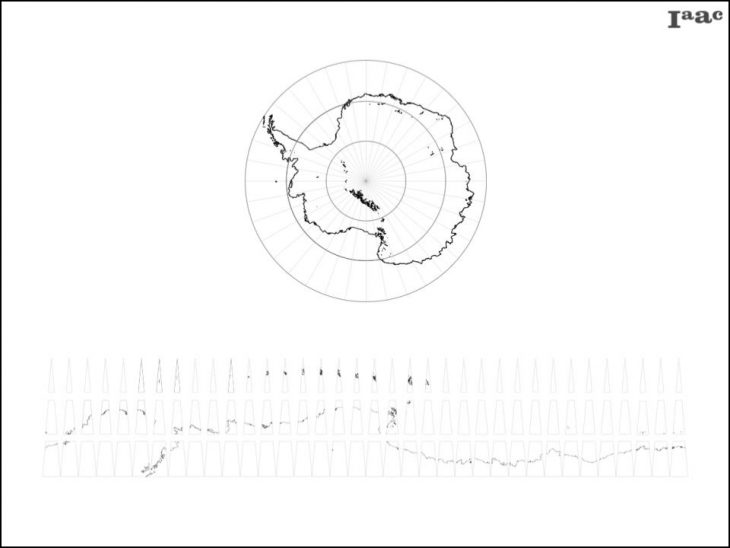
History
Antarctica is thought to have been discovered in the late 18th century, with assured explorations of the frigid continent taking place by 1850. The primary purposes of endeavors to Antarctica have historically been exploration, curiosity, and science. However, today up to 4.000 scientists temporarily inhabit the island, with the primary task of data collection.
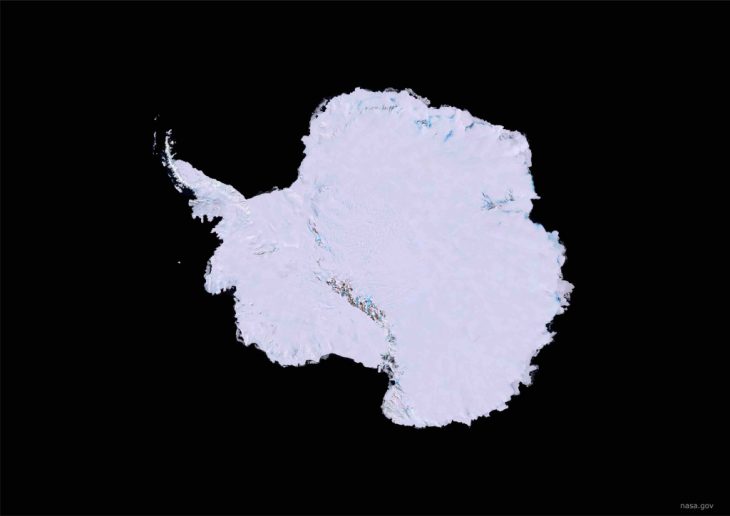
The frozen continent of Antarctica contains the vast majority of all freshwater on Earth has impact for the future of the earth as we know well about global warming issue.
The first sighting of Antarctica was in 1810, 200 years ago by the Australia fishing ship and it took a hundred year to set up the first station in 1910 after people reached the South Pole. The exploration and expeditions has started.
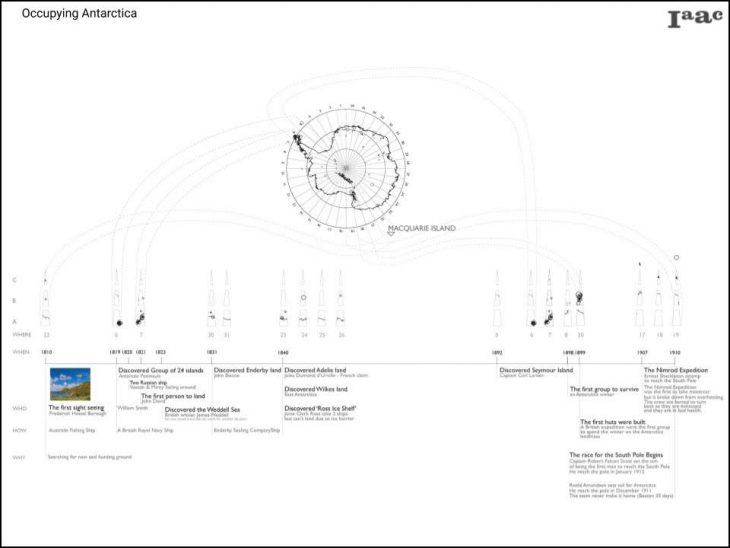
Population in Antarctica has no permanent resident and field camps that are staffed seasonally or year-round. The largest station, McMurdo Station where near the coastline, has a summer population of about 1,000 people and a winter population of about 200. Approximately 29 nations, all signatories to the Antarctic Treaty.
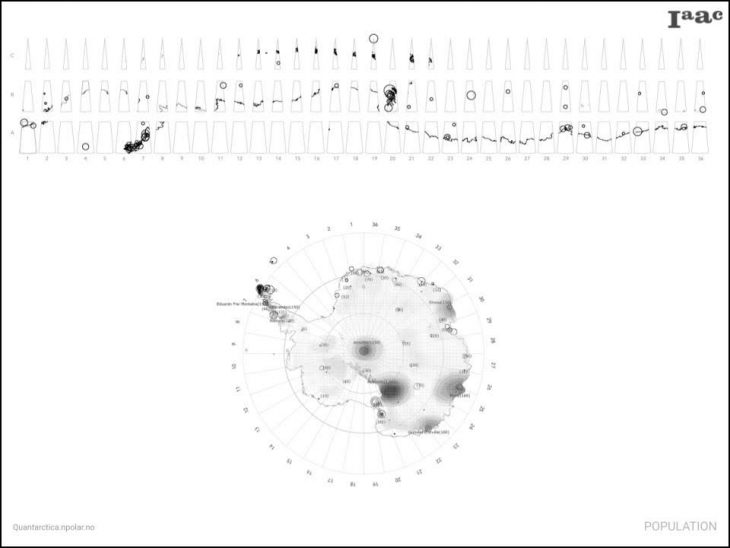
Accessibility, there are 2 ways: Air and Sea. The station around the coastline can access by ship.
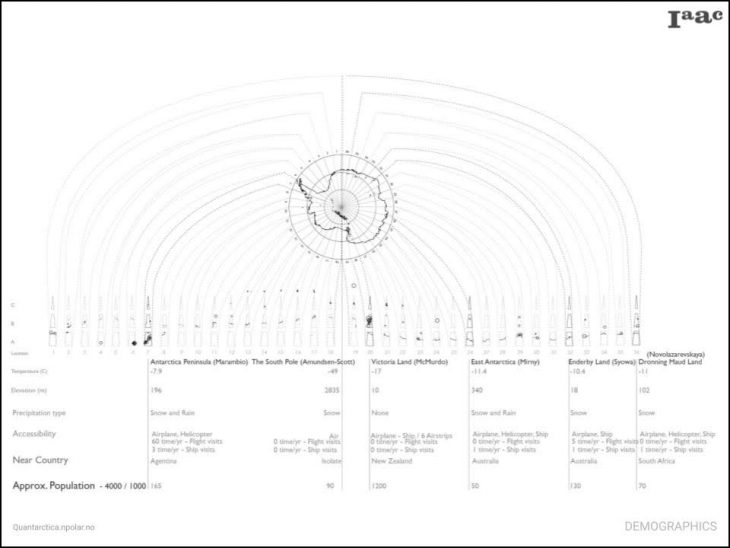
Facility infrastructure, the research focus on the area where there is a high density of population. The station can get electricity by fossil fuel and they all have internet connection.
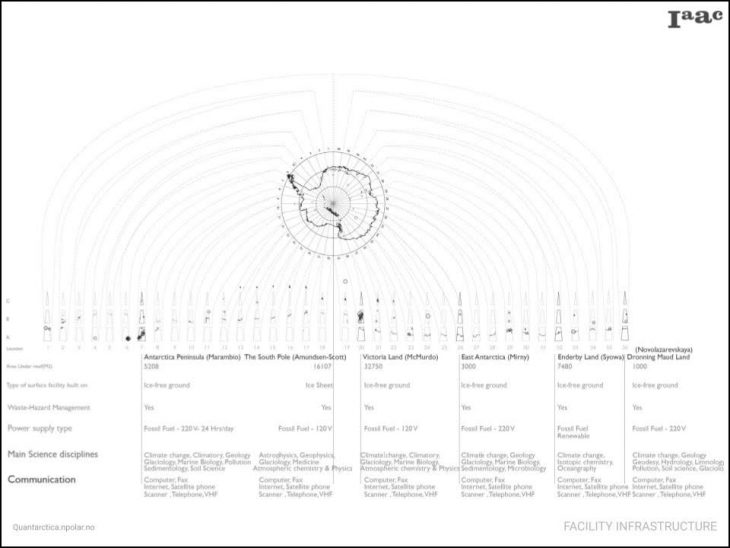
A dataset containing information on Antarctica’s facilities helps visualize the spread of bases by country over time.
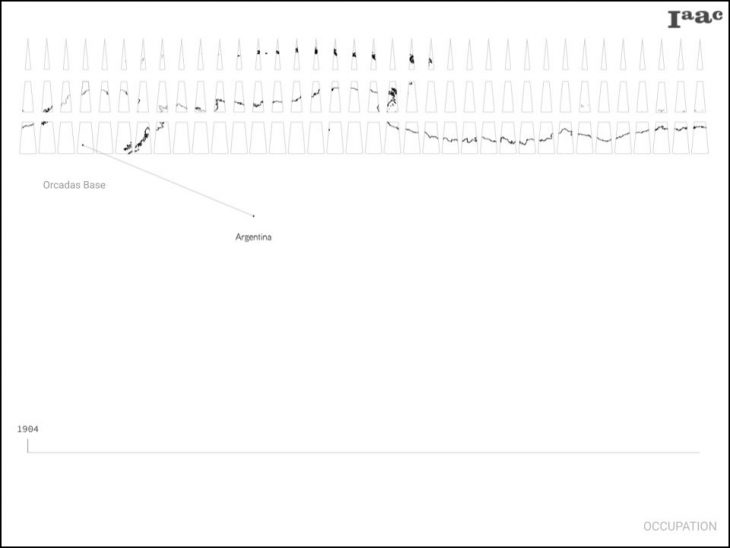
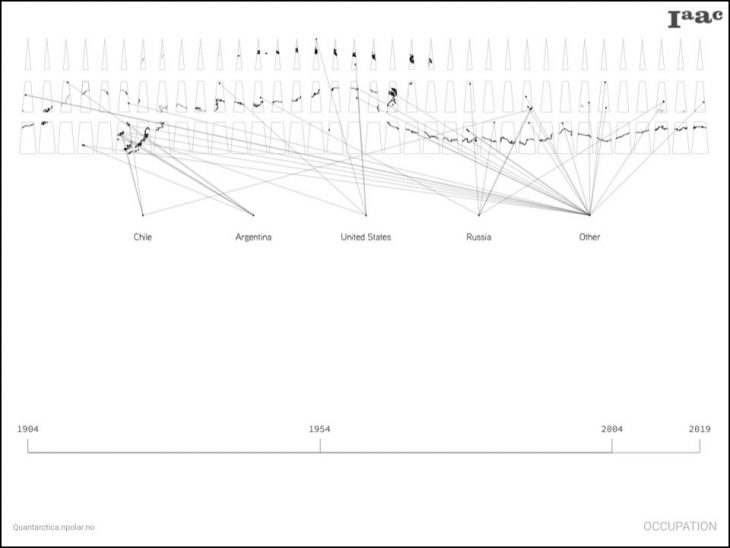
As of 2019, here are the relative population sizes of all in-use facilities, denoted by circle radius.

A dataset on the connectivity of facilities was amassed from various articles. The relative download speed (mbps) is denoted by WiFi icons. Notice the concentration along the coast.
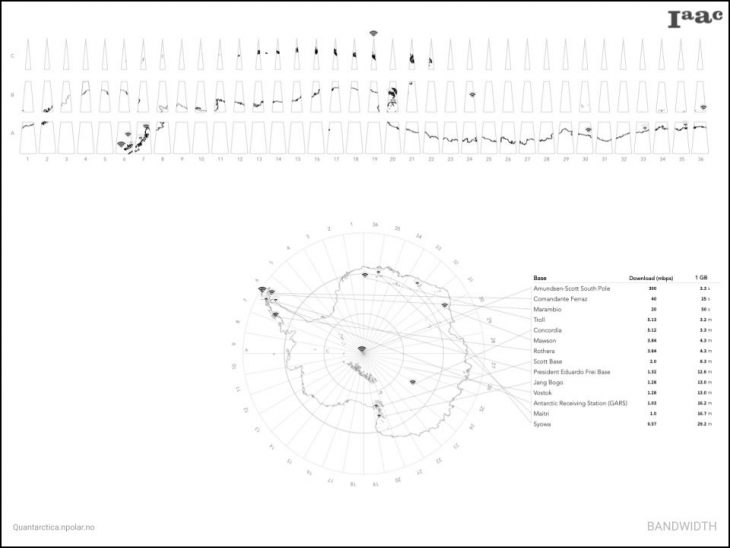
In order for this connectivity to take place, satellites are used. Logistical difficulties such as harsh conditions and expense eliminate underwater cables from being a possibility. Also, no landmass is close enough to allow for terrestrial transmissions.
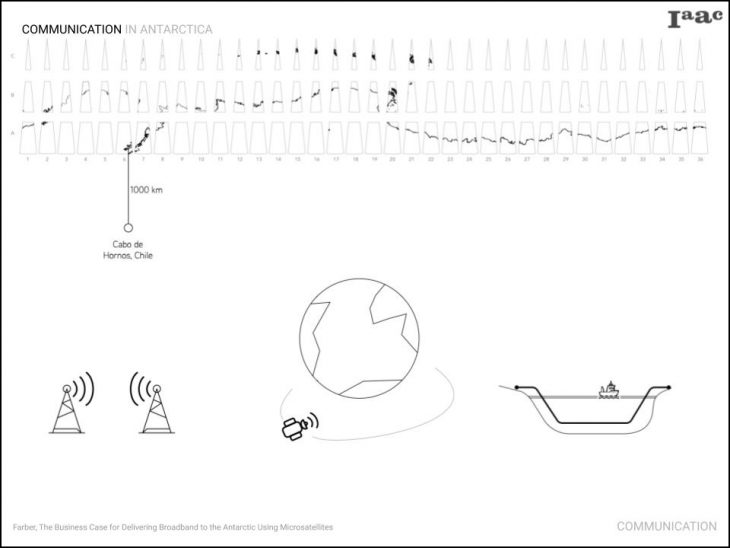
For the assigned research topic in the Internet of Cities studio, the group decided to tackle the eventual state of ubiquitous computing and the role that technology has in driving cities towards that ubiquitous and connected context. This urban phenomenon contains plenty of parameters; however the group decided to focus on the transportation, social, economic, judicial, privacy, health, and governmental drivers.
The accessibility to information and applications has transformed the way our citizens and cities behave. To call out a few of these changes, citizens are able to move around our cities quicker, demand delivery of goods and resources to their home, and interact with each other at a faster rate, albeit in a digital world. This, in turn, has created new markets and jobs for the citizen, caused our local businesses to adapt in order to survive, and changed the normalities of what it means to be social.
The ubiquitous state will present even more transformations and challenges for our cities. For example, autonomous driving could open up space for public use but also brings upon safety issues. Artificial intelligence in general can boost a cities economy but will have to be rolled out appropriately with rigid policy. Furthermore, an ultra connected state brings serious questions as to the privacy of our citizen’s data.
One key project that exemplifies these challenges well is the Sidewalk Labs project in Toronto. A well funded project that aims to turn the Toronto eastern waterfront into a high tech public space in order “to shape the city’s future and provide a global model for inclusive urban growth” has had its own challenges with citizen privacy. Their current solution to achieving consent from pedestrians is implementing a signal system that shows citizens how and why the city is getting their data, shown in the figure below.
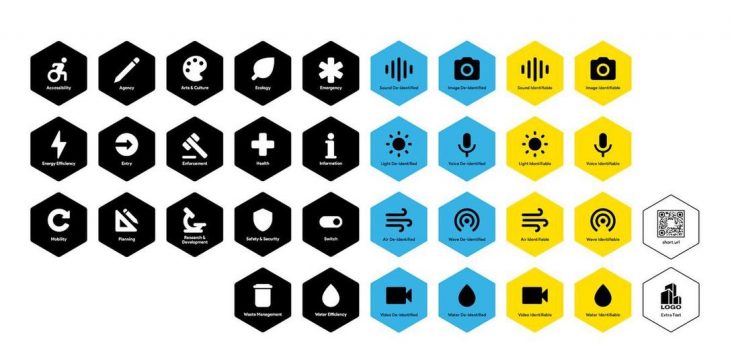
In connecting the research topic with the mapping exercises, the group considers Antarctica to be one of the next frontiers in terms of wireless connectivity. Currently, the continent is creating more data than it is able to transmit. Due to the importance of this scientific data to our climate, the group will continue to investigate modeling connectivity within Antarctica.
Sources:
Dataset on Facilities: Quantarctica
Mcketta, Isla: Exploring the Internet in Antarctica
Faber, Daniel: The Business Case for Delivering Broadband to the Antarctic Using Micro-Satellites
Internet Service Providers to Antarctica
USAP
Image from Sidewalks Lab: Sidewalks Lab
A Frozen Network is a project of IaaC, Institute for Advanced Architecture of Catalonia
developed at Master in City & Technology in (2019/2020) by:
Students: Andrew Saltzman, Eli Munn, Rashid Gilfanov, Pawitra Bureerak
Faculties: Mathilde Marengo, Edouard Cabay